| Winning: Turkey Takes On China
获胜:土耳其占领中国无人机市场 Date:2020-05-02 Source:strategypage By:Globalmil Viewed: |
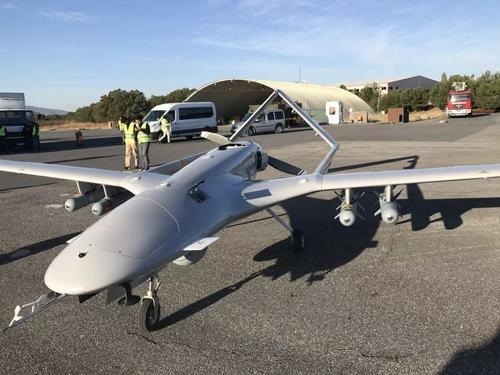
“拜拉克”(Bayraker) TB2型无人机系统
April 25, 2020: In the last few years Turkish designed UAVs have gained a lot of combat experience in Syria, Yemen, Ukraine and Libya. Turkish aircraft are effective and now China, Israel and the U.S. have another competitor in the combat UAV market. Turkey claims that their UAVs in Syria have destroyed over 2,500 targets, nearly all of them belonging to the Syrian military as well as some belonging to Kurdish separatists (mainly Syrian, but some Turkish) forces. The targets included at least 135 tanks, 40 other armored vehicles, 45 tube artillery weapons, 44 multiple rocket launchers, twelve anti-tank guns, 29 anti-aircraft systems, one UAV, eight helicopters and nine ammunition storage sites. Turkey described how one of the Syrian anti-aircraft systems, a Russian made Pantsir mobile missile launcher was destroyed by a UAV. Normally a Pantsir is active and searching for targets, including hostile UAVs. Turkey had another of their new systems, the Koral jammer, which is vehicle mounted and apparently widely used in Syria, jam the Pantsir sensors so a Bayraker TB2 UAV could destroy the Pantsir vehicle with a Mam-L laser-guided missile. . The Turks provided video.
2020年4月25日:在过去的几年中,土耳其设计的无人机在叙利亚、也门、乌克兰和利比亚获得了很多战斗经验。土耳其飞机很有效,现在中国、以色列和美国在作战无人机市场上又有了竞争对手。土耳其声称,他们在叙利亚的无人机摧毁了2500多个目标,几乎所有目标都属于叙利亚军方,还有一些属于库尔德分离主义者(主要是叙利亚人,但有一些土耳其人)。目标包括至少135辆坦克,40辆其他装甲车辆,45门火炮,44个多管火箭炮,十二门反坦克炮,29个防空系统,一架无人机,八架直升机和九个弹药储存地点。土耳其演示了叙利亚制造的防空系统之一,俄罗斯制造的“铠甲”(Pantir)机动导弹发射系统是如何被无人机摧毁的。通常,“铠甲”处于运行状态并搜索目标,包括敌对的无人机。土耳其还有另一套新系统,即“克拉尔”(Koral)雷达干扰系统,该系统安装在车辆上,显然在叙利亚广泛使用,它干扰了“铠甲”传感器,因此Bayraker TB2无人机可以用Mam-L激光制导导弹摧毁“铠甲”系统车辆。土耳其提供了视频。
The Mam-L has a range of 8 kilometers and weighs half as much as the American Hellfire. Thus Mam-L is light enough for smaller UAVs to carry two of them. Mam-L and the larger UMTAS are the principal weapons of Turkish armed UAVs and are used regularly against PKK separatists in Turkey and Syrian forces and rebel groups in Syria. Mam-L and UMTAS are available to all customers for Turkish UAVs large enough to carry them.
Mam-L射程8公里,重量达到美国“地狱火”导弹的一半。因此,Mam-L足够轻,可供小型无人机携带两枚。Mam-L和更大的UMTAS是土耳其军用无人机的主要武器,经常用于对付土耳其的库尔德工人党分离主义者以及叙利亚的叙利亚军队和叛乱组织。所有客户都可以使用Mam-L和UMTAS用于从土耳其购买的足够大的无人机。
The 25 kg (55 pound) Mam-L is an unpowered version of the larger (37.5 kg/83 pound) UMTAS rocket-powered laser-guided missile. Both have a range of eight kilometers but the Mam-L glides to the target and range is less if the UAV is at a lower altitude. UMTAS is much faster and has a “fire and forget” feature where once the UAV laser designator identifies the target, the UMTAS will home in on it while the UAV seeks other targets. Mam-L is used against smaller, unarmored and stationary targets. UMTAS is described as an anti-tank missile and effective against tanks whereas the Mam-L will usually only damage a tank if that. Most of the targets Turkish UAVs attacked were troops in the open, bunkers, buildings, or unarmored vehicles.
25千克(55磅)Mam-L型是较大型号(37.5千克/ 83磅)UMTAS型火箭助推激光制导导弹的无助推版本。两者的射程均为8公里,但Mam-L滑向目标,如果无人机处于较低高度,射程会更短。UMTAS速度更快,并具有“射后不管”能力,一旦UAV激光指示器识别出目标,UMTAS就会锁定在其上,而UAV则寻找其他目标。Mam-L可用于较小,没有装甲的固定目标。UMTAS被称为一种反坦克导弹,对战车有效,而Mam-L通常只会对战车造成损伤。土耳其无人机攻击的大多数目标是空地上的部队,掩体,建筑物或无装甲车辆。
Most Turkish UAV manufacturers are attracting export orders. At the end of 2018, Ukraine ordered two Bayraker TB2 UAV systems for $69 million. Each system contains six UAVs, three truck-mounted ground control systems, two remote video terminals (which troops can use) and maintenance gear. The first system was delivered in 2019 and the other in 2020. Ukraine is the second export customer for Bayraker, as Qatar had earlier ordered one system. Saudi Arabia is also a customer. The primary user is the Turkish military, which already has six systems and plans to buy 151 UAVs (mostly as systems but also spares for expected operational losses).
大多数土耳其无人机制造商正在吸引出口订单。 2018年底,乌克兰以6900万美元的价格订购了两套“拜拉克”(Bayraker) TB2型无人机系统。每套系统包含六架无人机,三个车载地面控制系统,两个远程视频终端(可供士兵使用)和维护设备。第一套系统于2019年交付,另一套系统于2020年交付。乌克兰是“拜拉克”(Bayraker)的第二个出口客户,因为卡塔尔早些时候订购了一套系统。沙特阿拉伯也是一个客户。主要用户是土耳其军方,该国军方已经拥有6套系统,并计划购买151架无人机(主要是作为系统,但也可以用于替补预期的战损)。
Turkey has not released a lot of information on their UAV losses in combat. In Libya, where several hundred Turkish troops and several thousand Arab mercenaries intervened in the civil war in 2019, the Bayraktar TB2 was used a lot and the opposition, the LNA (Libyan National Army), has claimed to have shot down 28 of them as of mid-April. Photographic evidence of only a few of these destroyed UAVs is available and the LNA admits that many of the Bayraktar TB2s were destroyed over enemy (Libyan GNA/Government of National Accord) forces. The LNA controls about 80 percent of Libya and Turkey intervened because the GNA is recognized by the UN while the LNA is only recognized by most Libyans. The GNA is, like Turkey, more tolerant of Islamic militant groups and was willing to sign a treaty that bolstered Turkish claims on waters off Greece that might contain natural gas deposits. Turkey is seen by most countries, including Russia and nearly all Arab states, as the unwelcome foreign invader in Libya. As a result, Turkey does not like to discuss its military operations there. The LNA is actively supported by several Arab states, mainly Egypt and the UAE (United Arab Emirates). The UAE has been operating its Chinese armed UAVs in Libya for at last two years and the LNA has an active air force that can shoot down large UAVs like the Bayraktar TB2. In Ukraine, the Bayraktar TB2 is facing Russian backed forces who also have a lot of anti-aircraft weapons and have shot down several of the Turkish UAVs. Same situation in Yemen, where Iran-backed rebels are a threat to Turkish UAVs. Despite these combat losses, the Turkish UAVs have performed as expected. All UAVs of this type, be they Israeli or American are vulnerable. A slow UAV is unequipped to deal with most anti-aircraft missiles but able to avoid most ground fire if they stay at a high (6,000 meters, 20,000 feet) altitude.
土耳其尚未发布太多有关无人机战损信息。在利比亚,2019年有数百名土耳其军人和数千名阿拉伯雇佣军介入内战,Bayraktar TB2被大量使用,而反对派利比亚国民军(LNA)声称击落了其中的28架,4月中旬。仅提供了这些被摧毁的无人机中很少几个影像证据,LNA承认,许多Bayraktar TB2都是在敌军(利比亚GNA /全国团结政府)的部队上摧毁的。利比亚国民军控制着约80%的利比亚和土耳其干涉是由于全国团结政府被联合国认可,而利比亚国民军仅被大多数利比亚人认可。像土耳其一样,利比亚全国团结政府对伊斯兰激进组织的容忍度更高,并愿意签署一项条约,支持土耳其对可能包含天然气矿藏的希腊海域的主张。包括俄罗斯和几乎所有阿拉伯国家在内的大多数国家都将土耳其视为利比亚不受欢迎的外国入侵者。结果,土耳其不愿意讨论在该国的军事行动。利比亚国民军得到了几个阿拉伯国家(主要是埃及和阿联酋)的积极支持。阿联酋近两年来一直在利比亚操作其中国武装无人机,而利比亚国民军拥有一支活跃的空军部队,可以击落Bayraktar TB2等大型无人机。在乌克兰,Bayraktar TB2面对的是俄罗斯支持的部队,他们也拥有大量的防空武器,并击落了几架土耳其无人机。也门的情况也一样,伊朗支持的叛军对土耳其无人机构成威胁。尽管有这些战斗损失,但土耳其无人机仍表现出预期。所有这种类型的无人机,无论是以色列还是美国,都是脆弱的。慢速无人机无法应对大多数防空导弹,但如果它们停留在高空(6,000米,20,000英尺),则能够避免大多数地面火力。
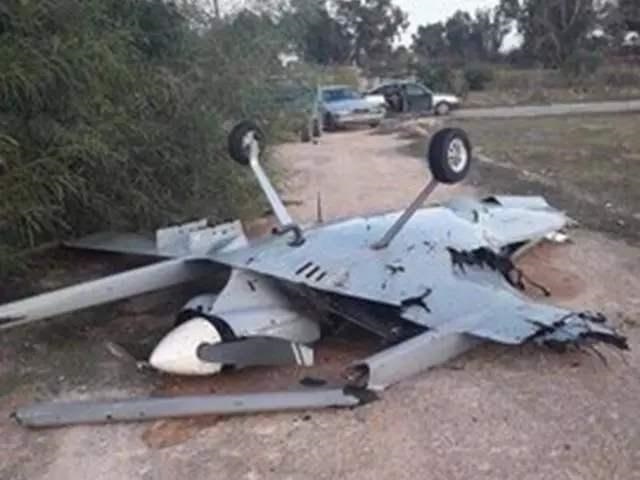
利比亚国民军宣布在的黎波里上空击落了一架土耳其“拜拉克”(Bayraker) TB2无人机
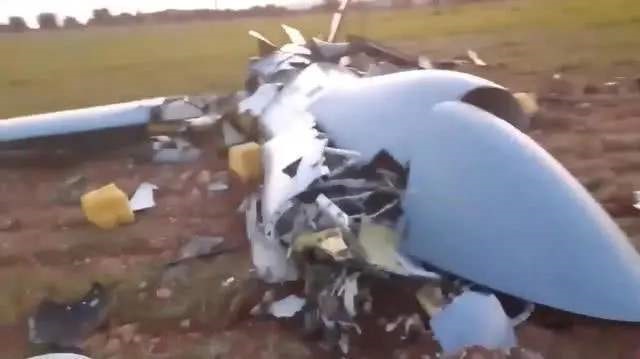
"安卡"军用无人机被击落
The small Turkish firm that developed Bayraktar borrowed heavily from commercial technology that has already proved itself. As a result, Bayraktar was the first locally designed and built UAV of its class to enter service in 2014. Bayraktar is a 650 kg (1,433 pounds) aircraft with a 55 kg (110 pound) payload and an endurance of 24 hours. In 2016 Bayraktar TB2 was equipped to carry two Turkish made Mam-L laser-guided missiles.
一家土耳其小型公司开发“拜拉克”(Bayraker)已经证实自己大量借用商业技术。因此,Bayraktar是2014年投入服役的首款本国设计和制造的同类型无人机。Bayraktar是一架650千克(1,433磅)的飞机,有效载荷为55千克(110磅),航时为24小时。2016年,Bayraktar TB2装备了两枚土耳其制造的Mam-L型激光制导导弹。
The same firm also developed the much smaller Bayraktar Mini UAV which is a 4.6 kg (9.9 pounds) aircraft that is battery powered and hand-launched. Endurance is 60 minutes and the Bayraktar can operate up to 15 kilometers from the operator. The Turkish Army has been using the Bayraktar Mini since 2007. The Turkish national police have also ordered the Bayraktar Tactical.
该公司还开发了更小的Bayraktar Mini无人机,它是4.6千克(9.9磅)的飞机,由电池供电并手持发射。航时为60分钟,Bayraktar可距离操作人员15公里。自2007年以来,土耳其军队一直在使用Bayraktar Mini。土耳其国家警察还订购了Bayraktar Tactical系统。
Turkey has another firm producing large UAVs for commercial and military use. The latest entrant is Vestel, a Turkish conglomerate that has long manufactured appliances, computer equipment and commercial grade equipment for a wide variety of needs. In 2016 Vestel offered the Turkish military a new large UAV design, the Karayel. The Turkish military tried them out and by 2019 Vestel even had its first export customer, Saudi Arabia. The Turkish military has been using it in Syria and against PKK Kurdish separatists in eastern Turkey and was pleased with the results. Karayel is a half-ton UAV with a max endurance of 20 hours and a controlled flight range of 200 kilometers. Preprogrammed flights can go much farther. Karayel can fly high enough (6,500 meters/20,000 feet) to avoid most anti-aircraft weapons.
土耳其还有一家公司生产用于商业和军事用途的大型无人机。最新加入者是伟视达(Vestel)公司,一家土耳其企业集团,该公司长期生产满足各种需求的电器,计算机设备和商业级设备。2016年,伟视达公司向土耳其军方提供了一种新型的大型无人机设计,即“卡拉耶尔”(Karayel)。土耳其军方对其进行了测试,到2019年,伟视达公司甚至拥有了其第一个出口客户沙特阿拉伯。土耳其军队一直在叙利亚使用它,并在土耳其东部对付库尔德工人党库尔德分离主义分子,对此结果感到满意。“卡拉耶尔”是半吨级无人机,最大航时为20小时,可控制飞行距离为200公里。预编程飞行可以飞得更远。“卡拉耶尔”可以飞行得足够高(6,500米/ 20,000英尺),可以避开大多数防空武器。
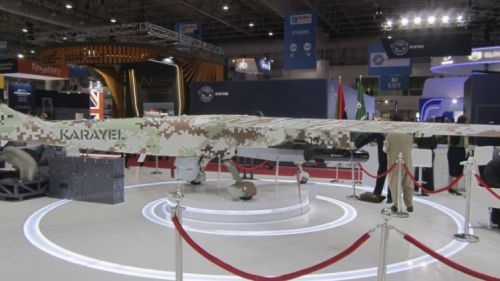
“卡拉耶尔”(Karayel)无人机
At least one Karayel was shot down in Yemen by rebels operating along the Saudi border. This UAV may have been flying lower to obtain more detailed video of what was below and came within range of rebel anti-aircraft missiles. Or it may have had equipment problems. Whatever the case the Saudis had at least one of them, which is now lost.
至少一架“卡拉耶尔”在也门被在沙特边境活动的叛军击落。这架无人机可能一直在低空飞行,以获取更详细的视频,了解下面的情况,并在叛军防空导弹的射程内。或者它可能有设备问题。不管是什么情况,沙特至少有一架,现在已经失去了。
Karayel is well designed, with multiple redundancies and automatic (software controlled) landing and takeoff. Max payload is 190 kg, which means for shorter (a few hours) missions it can carry four Turkish made 22.5 kg (50 pound) Mam-L laser-guided missiles (similar to Hellfire) or two 50 kg GPS guided bombs. For longer (up to 20 hour) surveillance missions Karayel carries only about 55 kg of sensors (day/night vidcams or even a lightweight radar).
“卡拉耶尔”经过精心设计,具有多个冗余功能以及自动(软件控制)降落和起飞功能。最大有效载荷为190千克,这意味着在较短的任务(几个小时)内,它可以携带四枚土耳其制造的22.5千克(50磅)Mam-L激光制导导弹(类似于“地狱火”导弹)或两枚50千克GPS制导炸弹。对于更长的监视任务(长达20小时),“卡拉耶尔”仅携带约55千克的传感器(昼/夜摄像头,甚至是轻型雷达)。
Turkish firms have developed and deployed several workable combat UAVs and the Turkish armed forces have tried them all. In early 2018 the Turkish Air Force received six of 40 Anka UAVs they had ordered back in 2013. At that point eight Ankas had been built but two crashed during testing. Anka is actually delivered as a system and each of these consists of three UAVs plus ground control equipment and all necessary maintenance and ground operations gear. Looking very similar to the American Predator, the Anka is a 1.6 ton aircraft propelled by a rear-facing propeller. The payload is 200 kg (440 pounds), endurance is 24 hours and Anka can operate up to 200 kilometers from its controller. Max altitude is 7,900 meters (26,000 feet). A UAV like this would sell for over $2 million each. The Turkish military was supposed to receive its first Anka by the end of 2013 but that was delayed by technical problems. Turkey also announced a larger (four ton) version of Anka that can carry missiles or a lot more reconnaissance equipment. That has also been delayed and none have entered service yet. In 2016 Turkey put the original Anka UAV into service for the first time but deliveries of production models only began in 2017. The Turkish Air Force ordered 30 aircraft (ten systems) in 2013. Anka was late to arrive and the smaller, less expensive and more reliable Bayraker TB2 has become the most widely used by the Turkish military.
土耳其公司已经开发并部署了几种可行的作战无人机,土耳其武装部队已经对其进行了全部试飞。在2018年初,土耳其空军收到了2013年订购的40架“安卡”(Anka)无人机中的6架。当时已制造了8架“安卡”,但在测试过程中有2架坠毁。“安卡”实际上是作为系统交付的,每个系统都由三架无人机,地面控制设备以及所有必要的维护和地面操作设备组成。外观与美国“捕食者”非常相似,“安卡”是一架重1.6吨的飞机,由机身后部螺旋桨推进。有效载荷为200千克(440磅),续航时间为24小时,“安卡”可以在距其控制站200公里的地方操作。最大高度为7,900米(26,000英尺)。这样的无人机每架售价将超过200万美元。土耳其军方原定于2013年底收到第一架“安卡”(Anka),但由于技术问题而推迟。土耳其还宣布了更大(四吨)的安卡版本,可以携带导弹或更多侦察设备。也被延迟了,并且没有投入使用。2016年,土耳其首次将初始版本“安卡”无人机投入使用,但直到2017年才开始交付生产型。土耳其空军在2013年订购了30架飞机(十套系统)。“安卡”到货较晚,体积更小,价格更便宜,更可靠的Bayraker TB2已成为土耳其军方使用最广泛的武器。
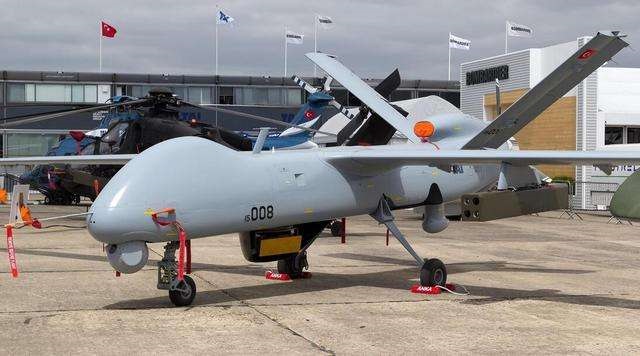
土耳其安卡-S大型武装无人机
Turkish UAV development has been going on since the late 1990s when Israel was still an ally and supplier of weapons and tech to the Turks. But by 2003 an anti-Israel Islamic government was running Turkey, and local UAV development was crippled but not destroyed as military and technical relationships with Israel were severed. Turkish firms could use a lot of existing tech to build larger UAVs suitable for commercial use. What makes large UAVs attractive to the military are the accessories, like sensors and the ability to use weapons. Take that out of most current military UAVs and you have a UAV for commercial markets, which includes border patrol and coast guard.
自1990年后期以来,土耳其一直在进行无人机的开发,当时以色列仍是土耳其的盟友和武器及技术供应商。但是到了2003年,一个反以色列的伊斯兰政府开始管理土耳其,由于与以色列的军事和技术关系断绝,国产无人机发展受到了损害,但并未遭到破坏。土耳其公司可以使用许多现有技术来制造适合商业用途的大型无人机。使得大型无人机对军方具有吸引力的是附件,例如传感器和使用武器的能力。 从目前的大多数军用无人机中剔除掉军用附件,客户就会拥有用于商业市场的无人机,其中包括边境巡逻和海岸警卫队。
Anka was clearly a military UAV, of the type the Israelis had pioneered in the 1980s. The Turkish government apparently ordered a state-owned firm to match the leased Israeli Heron UAVs used by Turkish forces. These Herons were eventually (2017) returned to Israel. Building large UAVs similar to the Heron proved difficult.
“安卡”显然是一种军用无人机,这种类型的无人机是以色列在20世纪80年代首创的。土耳其政府显然指令一家国有公司与土耳其部队使用的从以色列租用的“苍鹭”无人机相匹配。这些“苍鹭”最终(2017年)被以色列收回。制造类似于“苍鹭”的大型无人机非常困难。
One of the disputes with Israel was over electronic accessories Turkey wanted to add to the Israeli UAVs. The Turkish developer was perpetually late and when the delivery was made there were problems installing these on the Israeli UAV. The Turks blamed the Israelis and the Israelis kept quiet until they got their UAVs back. Then details of the over-promised and under-delivered Turkish technology were released. This situation was not unique to the large UAVs like Anka, and with other ambitious Turkish defense projects where the government demanded more than local firms, especially state-owned ones, could deliver. With the Israelis out of the picture, there was no one the government could blame for the years of delays in getting the Anka operational.
与以色列的争端之一是土耳其希望在以色列无人机上增加电子配件。土耳其开发商一直延迟,交付时,在以色列无人机上安装这些配件出现问题。土耳其指责以色列,以色列保持沉默,直到他们收回他们的无人机。随后公布了承诺过高和交付不足的土耳其技术的细节。这种情况并非“安卡”这样的大型无人机所独有,土耳其政府对其他雄心勃勃的国防项目的要求超过了当地企业,尤其是国有企业所能提供的。由于以色列不在考虑之列,政府无法责怪任何人多年来拖延“安卡”的运作。
The smaller Turkish firm that developed the two Bayraktar UAVs paid closer attention to the Turkish experience with Israeli UAV tech and managed to develop and manufacture competitive UAVs sooner than the larger Turkish firms that paid more attention to Turkish politics than to customer needs. The Bayraktar TB2 was very similar to the Israeli Heron UAV, which was the primary UAV for the IDF (Israeli Defense Forces). Bayraktar also paid a lot of attention to software development, learning much from the experience of the Israelis and Americans. The Bayraktar TB2 flight software not only takes off and lands automatically but can also move from its parking spot on an airfield, taxi to the runway and takeoff without human intervention other than commands from the airbase flight controllers. In-flight, the control software has several redundancies, mainly alternate procedures for various emergencies that make Bayraktar TB2 safer and easier to operate. Ukraine probably could have obtained a similar UAV from China for less money but Bayraktar already had a reputation for reliability and better software than most. Another bonus for Ukraine to buy UAVs from Turkey was that Russia is trying, with mixed success, to turn Turkey into an ally. Ukraine also does business with China, which is also an ally with Russia but believes business is business.
较小的土耳其公司开发了两种Bayraktar无人机,比起大型土耳其公司,更关注土耳其在以色列无人机技术方面的经验,并设法比更关注土耳其政治而非客户需求的大型土耳其公司更快地开发和制造有竞争力的无人机。Bayraktar TB2与以色列“苍鹭”无人机非常相似,后者是以色列国防军(IDF)的主要无人机。Bayraktar还非常重视软件开发,从以色列和美国的经验中学到了很多东西。Bayraktar TB2飞行软件不仅可以自动起飞和降落,而且还可以从飞机场的停机位,滑行到跑道和起飞而无需人工干预,无需来自空军基地飞行控制站的命令。在飞行中,控制软件具有多个冗余,主要是针对各种紧急情况的替代程序,这些使Bayraktar TB2更安全,更易于操作。乌克兰可能可以用更少的资金从中国获得类似的无人机,但是Bayraktar已经以可靠性和更好的软件而享誉全球。乌克兰从土耳其购买无人机的另一个好处是,俄罗斯正在尝试以成败参半的方式使土耳其成为盟友。乌克兰也与中国做生意,中国也是俄罗斯的盟友,但认为生意就是生意。
The Heron Shoval UAVs Israel sold/leased to Turkey are very similar to the American Predator A (or MQ-1). The Shoval weighs about the same (1.2 tons) and has the same endurance (40 hours). Shoval has a slightly higher ceiling (10,000 meters versus 8,100) and software which allows it to automatically take off, carry out a mission, and land automatically. Not all American large UAVs can do this. Both Predator and Shoval cost about the same ($5 million), although the Israelis are willing to be flexible on price. The Shoval does have a larger wingspan (16.5 meters/51 feet) than the Predator (13.2 meters/41 feet) and a payload of about 137 kg (300 pounds).
以色列出售/租赁给土耳其的“苍鹭”(heron)或“竞技神”(shoval)无人机与美国“捕食者” A(或MQ-1)非常相似。“竞技神”的重量大致相同(1.2吨),并且具有相同的航时(40小时)。“竞技神”的升限稍高一些(10,000米对8,100米),其软件可以自动起飞,执行任务并自动降落。 并非所有的美国大型无人机都能做到这一点。 尽管以色列愿意在价格上保持灵活性,但“捕食者”和“竞技神”的成本大约相同(500万美元)。“竞技神”的翼展(16.5米/ 51英尺)确实比“捕食者”(13.2米/ 41英尺)更大,有效载荷约为137千克(300磅)。
Meanwhile, the anti-Israel Turkish government thought Shoval would be easy to replicate because Turkey's economy has been booming since 2000 and the Islamic government made good on its pledge to crack down on the corruption that had long crippled the economy. As the economy grew, the government sought to make Turkey more self-sufficient in military equipment, and UAVs are considered part of this program. But this was mainly for show, not for real. One exception was Turkish commercial firms developing, and delivering, less ambitious UAVs like the Bayraktar TB2 and Mini UAVs. By 2017 state-owned firms caught on. That year STM, a state-owned Turkish firm, put on the market three new locally developed UAVs. These UAVs (Alpagu, Kargu and Togan) are simpler and smaller than earlier Turkish efforts. STM declared that the three new UAVs were already in service, which meant that Turkish troops and police tested them and found them useful. What the manufacturers want is export sales and these UAVs address a market that is currently very crowded and competitive.
同时,反对以色列的土耳其政府认为“竞技神”很容易复制,因为土耳其的经济自2000年以来一直在蓬勃发展,而伊斯兰政府兑现了其承诺,将打击长期困扰经济的腐败现象。随着经济的增长,政府试图使土耳其的军事装备更加自给自足,无人机被视为该计划的一部分。但这主要是为了作秀,不是实用的。一个例外是土耳其商业公司开发并交付了雄心勃勃的无人机,如Bayraktar TB2和Mini UAV。到2017年,国有企业开始流行起来。同年,土耳其国有土耳其国营防务技术公司(STM)向市场投放了三种本国开发的新型无人机。这些无人机(Alpagu,Kargu和Togan)比土耳其早期的尝试更简单,更小。STM宣布三种新无人机已经投入使用,这意味着土耳其军队和警察对其进行了测试,发现它们很有用。制造商想要的是出口销售,这些无人机满足了目前非常拥挤和竞争激烈的市场。
Alpagu is a 3.7 kg (8.2 pounds) fixed-wing UAV that can do surveillance but is primarily meant for use as a portable cruise missile as it carries half a kilogram warhead and can be guided to a target up to 5,000 meters away by a soldier. The other two STM UAVs (Kargu and Togan) are based on commercial quad-copter designs. Kargu is a 6.3 kg (13.8 pounds) UAV while Togan is a 7.5 kg (16.5 pounds) quad-copter design. These also carry a wide variety of accessories already available for UAVs like this. The problem with smaller UAVs like this is that they compete in a crowded commercial market, largely dominated by several Chinese firms. The companies are constantly innovating and introducing new models. Israel recognizes what is going on here and has adopted the Chinese quad-copters for military and police use.
Alpagu是一种3.7千克(8.2磅)固定翼无人机,可以进行监视,但主要用于便携式巡航导弹,因为它携带半公斤的弹头,可以被士兵引导到5,000米以外的目标上。另外两种STM无人机(Kargu和Togan)则基于商用四轴直升机设计。Kargu是6.3千克(13.8磅)的无人机,而Togan是7.5千克(16.5磅)的四旋翼设计。 这些还带有各种各样的附件,已经可以用于此类无人机。像这样的小型无人机的问题在于,它们在竞争激烈的商业市场中竞争,该市场主要由数家中国公司主导。这些公司正在不断创新和推出新型号。以色列意识到这里发生了什么,并已将中国的四旋翼直升机用于军事和警察用途。
上一篇:Naval Air: China Takes An Intimidation Hit 下一篇:Space: Elusive Enigma Flies Again
| The Booker dilemma: inside US Army transformation
“布克”困境:美国陆军转型内幕 |
| The decision to cancel the M10 Booker light tank is at the core of a reordering of US Army planning.... [2025-07-16] |
| Focus: A fragile balance in Asia, China has become leading military power in the
焦点:亚洲平衡脆弱,中国已成为该地区的主要军事力量 |
| However, China's rapid military growth in this area is tipping the balance in favor of regional power. ... [2024-08-27] |
| Small drones will soon lose combat advantage, French Army chief says
法国陆军总司令表示,小型无人机将很快失去战斗优势 |
| By Rudy Ruitenberg Thursday, Jun 20, 2024 作者:鲁迪瑞滕伯格 2024年6月20日星期四 French Army Chief of Staff Gen. Pierre Schill inspecting a Rapid Eagle anti-drone system at the Eurosatory defense show in Paris on June 19, 202... [2024-08-18] |
| What’s next for Ukraine’s incursion into Russia?
乌克兰入侵俄罗斯的下一步是什么? |
| Ukraine’s forces have surprised us all with its recent incursion into Russia’s Kursk Oblast since the operation to turn the tide of the war,... [2024-08-17] |
